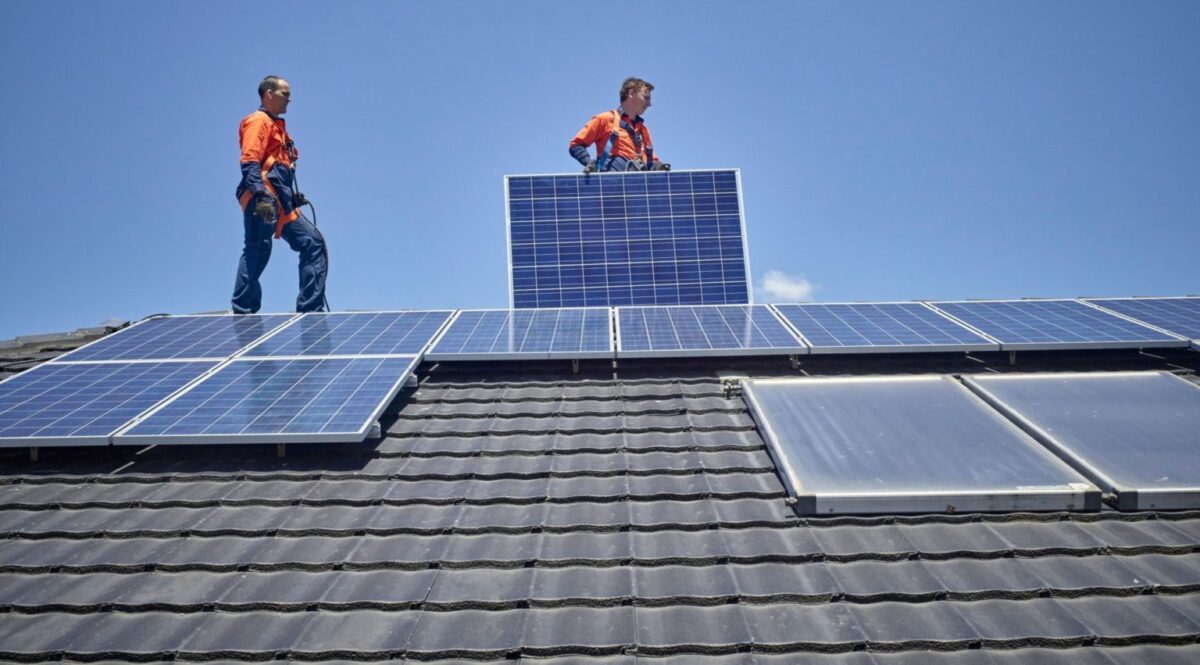According to data from the Solar Energy Industries Association (SEIA) and Wood Mackenzie, the U.S. has officially exceeded five million solar installations, marking a milestone that comes just eight years after the U.S. reached one million installations in 2016.
To put the rapid growth of the U.S. solar industry in perspective, the first solar installation was connected to the grid in 1973, and in just 41 years there are now more than five million grid-connected installs.
The rise in U.S. solar has not always been as meteoric as it is today, as over half of all U.S. solar installations have come online in just the past four years and over 25% have come online since the Inflation Reduction Act became law in 2022.

“Solar is scaling by the millions because it consistently delivers on its promise to lower electricity costs, boost community resilience, and create economic opportunities,” said SEIA president and CEO Abigail Ross Hopper. “Today 7% of homes in America have solar, and this number will grow to over 15% of U.S. homes by 2030. Solar is quickly becoming the dominant source of electricity on the grid, allowing communities to breathe cleaner air and lead healthier lives.”
SEIA forecasts that solar installations in the U.S. will double to 10 million by 2030 and triple to 15 million by 2034.
The residential sector accounts for 97% of all solar installations in the U.S., with a total of 36 GW installed by the end of 2023. While just 7% of homes in the U.S. currently have solar, that number is expected to grow to more than double to over 15% by 2030.
State policy making a difference
California leads the nation with 2 million solar installations, but the state’s residential market was harmed when the California Public Utilities Commission’ NEM 3.0 policy change cut payments for exported solar energy by about 75%.
Several other states are seeing rapid growth. Illinois was an emerging market with only 2,500 solar installations in 2017, and today it is a shining example of where solar policy promotes clean energy growth. Illinois is home to more than 87,000 solar installations or about 27 GW and 65 GW more is expected to come online in the next five years according to the SEIA.
Strong policies, such as the state’s renewable portfolio standard (RPS), are behind the growth in Illinois. Its RPS requires 25% of energy comes from renewable sources by 2025. The state also has the Illinois Shines program with incentives that makes solar more affordable for all. And Illinois has targets to have 40% of its energy come from renewable sources by 2030 and is aiming for 100% by 2050.
Florida is another market experiencing substantial growth, increasing from 22,000 installations in 2017 to 235,000 installations today. In a surprising move that buoyed rooftop solar in the state, the governor vetoed a bill that would have dropped net metering credits to near zero. The bill was founded on the same cost shift rhetoric used in California’s move to NEM 3.0, which has not fared well for rooftop solar.
“Florida is one of the fastest-growing solar markets in the country with new businesses popping up all across the state,” said Hopper. This veto signals that Florida’s energy economy is open for business, and that the rights of state residents should be placed ahead of monopoly utility interests.”
While the number of installations throughout the U.S. is impressive, the difference solar is making in the nation’s capacity is testament to the fact that solar is making a difference. For the first time, solar accounted for over half of new electricity generation capacity added 2023 and, by 2050, solar is expected to be the largest source of generating capacity on the U.S. grid.
The 5 million solar installations are making a serious cut to carbon emissions. SEIA estimates that the installations displace 198 million metric tons of CO2 every year. This reduction is the equivalent to 22 billion gallons of gas, or enough gas to travel to the sun and back nearly 3,000 times in a traditional ICE vehicle. Overall, SEIA calculates that the current solar capacity in the U.S. offsets the emissions of 12 million Americans, which is greater than the population of New York City and Los Angeles combined.
This content is protected by copyright and may not be reused. If you want to cooperate with us and would like to reuse some of our content, please contact: editors@pv-magazine.com.









By submitting this form you agree to pv magazine using your data for the purposes of publishing your comment.
Your personal data will only be disclosed or otherwise transmitted to third parties for the purposes of spam filtering or if this is necessary for technical maintenance of the website. Any other transfer to third parties will not take place unless this is justified on the basis of applicable data protection regulations or if pv magazine is legally obliged to do so.
You may revoke this consent at any time with effect for the future, in which case your personal data will be deleted immediately. Otherwise, your data will be deleted if pv magazine has processed your request or the purpose of data storage is fulfilled.
Further information on data privacy can be found in our Data Protection Policy.